Labels
The National Symbols
Tanzania's National Symbols
Identify Tanzania's national symbols
What is a national symbol?
A symbol is a sign that represents something. National symbols are signs which represent a nation. These symbols are very important as they serve as a reminder of our nationhood to us and to the rest of the world; they promote our culture and remind us about events that have taken place in our nation. Tanzania has several symbols; these include tangible things like money, flags and the coat of arms,as well as intangible things like the national anthem and language.
The following are the major national symbols in Tanzania:
- The national flag
- Presidential standard
- The coat of arms
- National Anthem
- Uhuru Torch
- National currency
- National Language
- The national Constitution
- National festivals (holidays) in Tanzania
The Significance of each National Symbol
Explain the significance of each national symbol
The national flag
A national flag is a piece of cloth with a special color design. The national flag of Tanganyika was hoisted for the first time on the 9th December, 1961 and that of the United Republic of Tanzania was hoisted for the first time on the 26th April 1964, when Tanganyika and Zanzibar united to form Tanzania. The main function of the national Flag is to show that Tanzania is a completely independent and sovereign nation. Our Flag has four colors; Green, Yellow, Black and Blue.
- Green represents the land and vegetation of Tanzania
- Blue represents the ocean and other water bodies found in the country
- Black represents the people of Tanzania
- Yellow represent the natural wealth of Tanzania, like minerals
Tanzanian’s national flag.
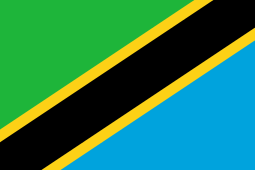
Importance of national flag
- It is a symbol of our independence/sovereignty
- It is a symbol of freedom and unity of the people
- The National flag is also a symbol of the nationality and a symbol of Tanzania culture
Presidential standard
The presidential standard is a flag which is used during official ceremonies where the president is in attendance. It has a green background with a blue and the coat of arms in the middle. The coat of arms on the presidential standard has no crops, human figure or the peak of Mount Kilimanjaro.
The Presidential standard
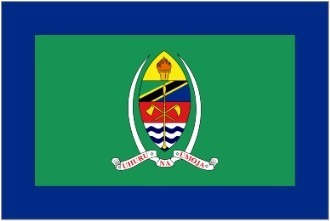
The coat of arms
The coat of arms is an official seal or stamp of the government which comprises different colors and landmarks of Tanzania. It act as national badge and, therefore, all government publications bear this official seal. Our coat of arms has twelve components. These components represent various national interests such as state power, economic bases, national culture and history.
Compositions of the coat of arms
The coat of arms comprises of the following things:
- Two human figures – The man and the woman represent the people of Tanzania. The two figures also symbolize the need for cooperation between men and women in order to bring about development.
- Two elephant tusks – These represent our national heritage in terms of wildlife. Tanzania has beautiful national parks and game reserves in which different animals and plants are found in their natural habitats.
- Shield and spears – They represent weapons that were used by Tanzanians to resist colonialism. These weapons represent the readiness of the people to defend their independence
- Golden band on the upper part of the shield - This represent the mineral wealth of the country
- Uhuru Torch – It symbolizes freedom, enlightenment, knowledge and prosperity.
- National Flag –It represent our sovereignty.
- Red band on the shield- this represent the fertile red soil found in our country
- Crossed Axe and hoe – These represent the tools which Tanzanians use to develop their country.
- Sea waves – These represent water bodies found in Tanzania. Approximately 62,000Km square of Tanzanian`s total area is made up of water bodies. This includes the Indian Ocean, rivers, lakes and swamps.
- Peak of mount Kilimanjaro- This is the highest mount in Tanzania and Africa in general which represents attractive geomorphological features.
- Crops (cotton and gloves) – At the feet of the man there is a branch of a glove tree. At the feet of the women there is the branch of cotton plant which stands for the cash crops produced in Tanzania.
- The wards “Uhuru na Umoja” which means freedom and unity express the belief that, Tanzanian`s strength depends on people`s solidarity.
Importance of the coat of arms
- It is used as the symbol of the authority and official government seal.
- It symbolizes our national culture and history.
- It symbolizes state power.
The national coat of arms
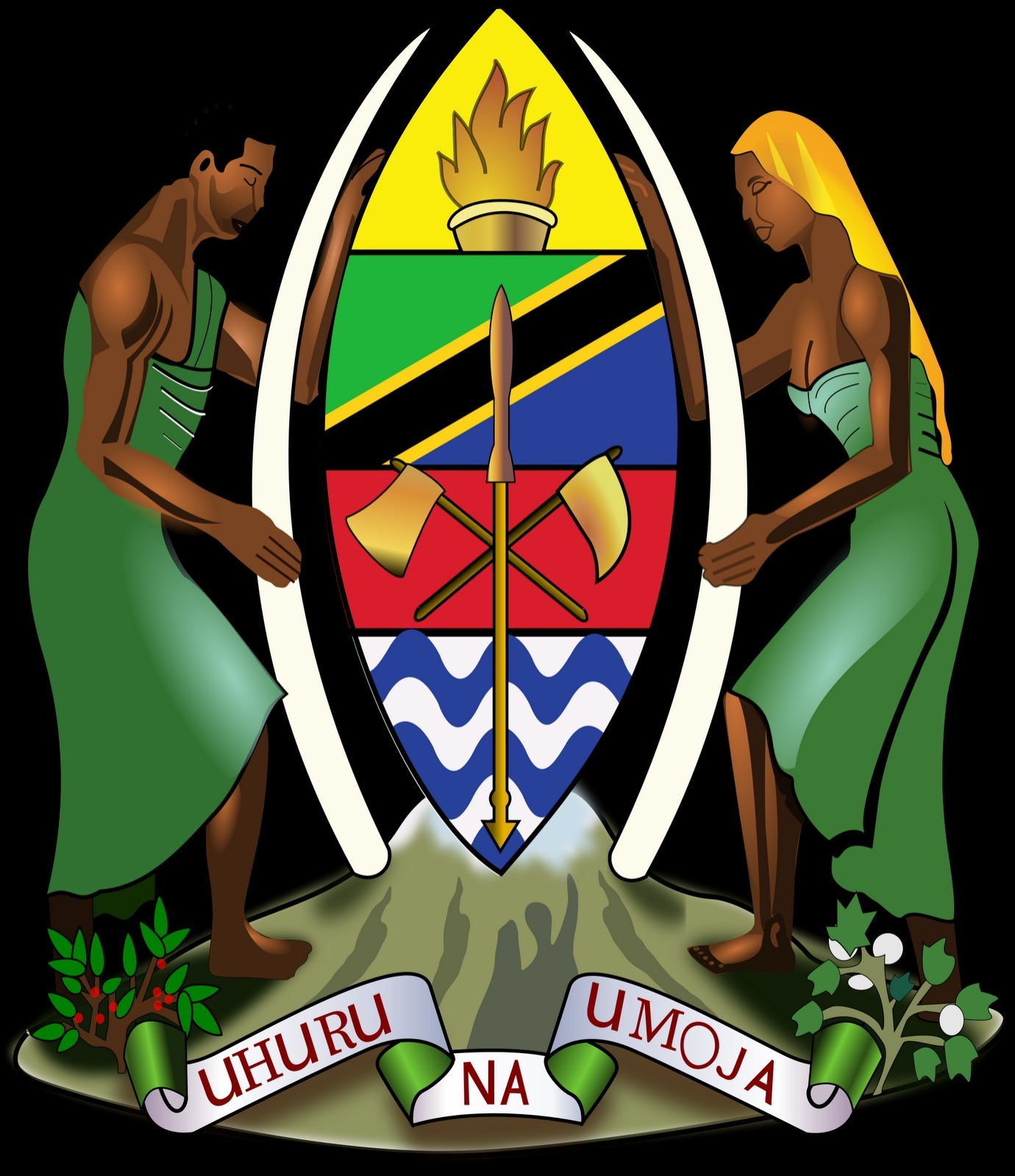
National Anthem
This is the official song which reflects people's national feelings, desire, glory and pride in their nationality. The Tanzanian national anthem is sung during important national occasions such as when a special announcement is made by the president; when foreign heads of states visit our country; When the president or the vice president and the prime minister visit another country officially, and when our national teams are playing against teams of other countries; before and after the president addresses the nation; and when the national flag is hoisted.
Importance of the national anthem
- It is a symbol of our nationality , freedom and it unifies Tanzanians
- It makes citizens feel proud of their country
- National anthem expresses a sense of belonging to Tanzania and Africa
- It identifies Tanzania outside the country.
Uhuru Torch
This is the touch of freedom which also known as independence touch introduced by the first president of Tanzania Mwl. J.K.Nyerere as a symbol of freedom, unity, love, dignity, solidarity and hope among Tanzanians. It was first lit on top of Mount Kilimanjaro at midnight on 9th December 1961. This was the day Tanganyika got independence from Britain.
Importance of Uhuru Torch
- It symbolizes freedom and light
- It promotes unity in the country
- It also promotes peace, dignity, respect and hope among Tanzanians
- It promotes co-operation among Tanzanians and development in aspects of life
The Uhuru Torch
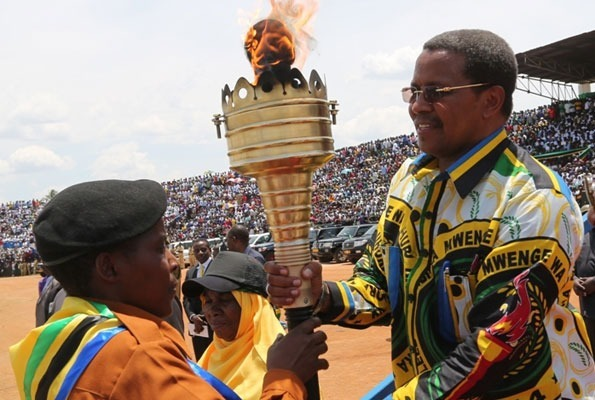
National currency
Is the system of money that a country uses. Our national currency is the Tanzanian shilling. Currency is also called money. Money is used for measuring value, trading and paying for goods and services in a country. Tanzania money is the form of notes and coins.
Importance of national currency
- It acts as a medium of exchange in trade transactions that is selling and buying of goods and services in the country
- It is used to measure value and identify the nationality and freedom of a nation
- It is the means of settling debts.
National Language
This is the language spoken by all the people within a country. The national language of Tanzania is Swahili.
Importance of the national language
- The national language acts as the media of communication within a county.
- It symbolizes the culture of the nation concerned which is Tanzania
- It unifies people with a common history.
- It also identifies the country internationally
The National Constitution
A national constitution is the system of laws and principles by which the nation is governed by. A constitution provides guidelines which society must follow. Our country Tanzania is ruled according to the constitution that was enacted 1977. Since that time year, it has been undergoing some amendments to suit the contemporary needs.
Importance of the national constitution
- The government rules by the will of the people through the constitution
- The constitution is the basic law from which all other laws are created.
- Under constitution there is separation of power between the executive, the legislature and the judiciary.
- The constitution provides for elections through which the people elect their representatives in the government
- The constitution gives people the freedom to enjoy their right.
- The constitution provides individuals with the mechanism to claim their rights before the courts of law.
The cover of the constitution of Tanzania 1977
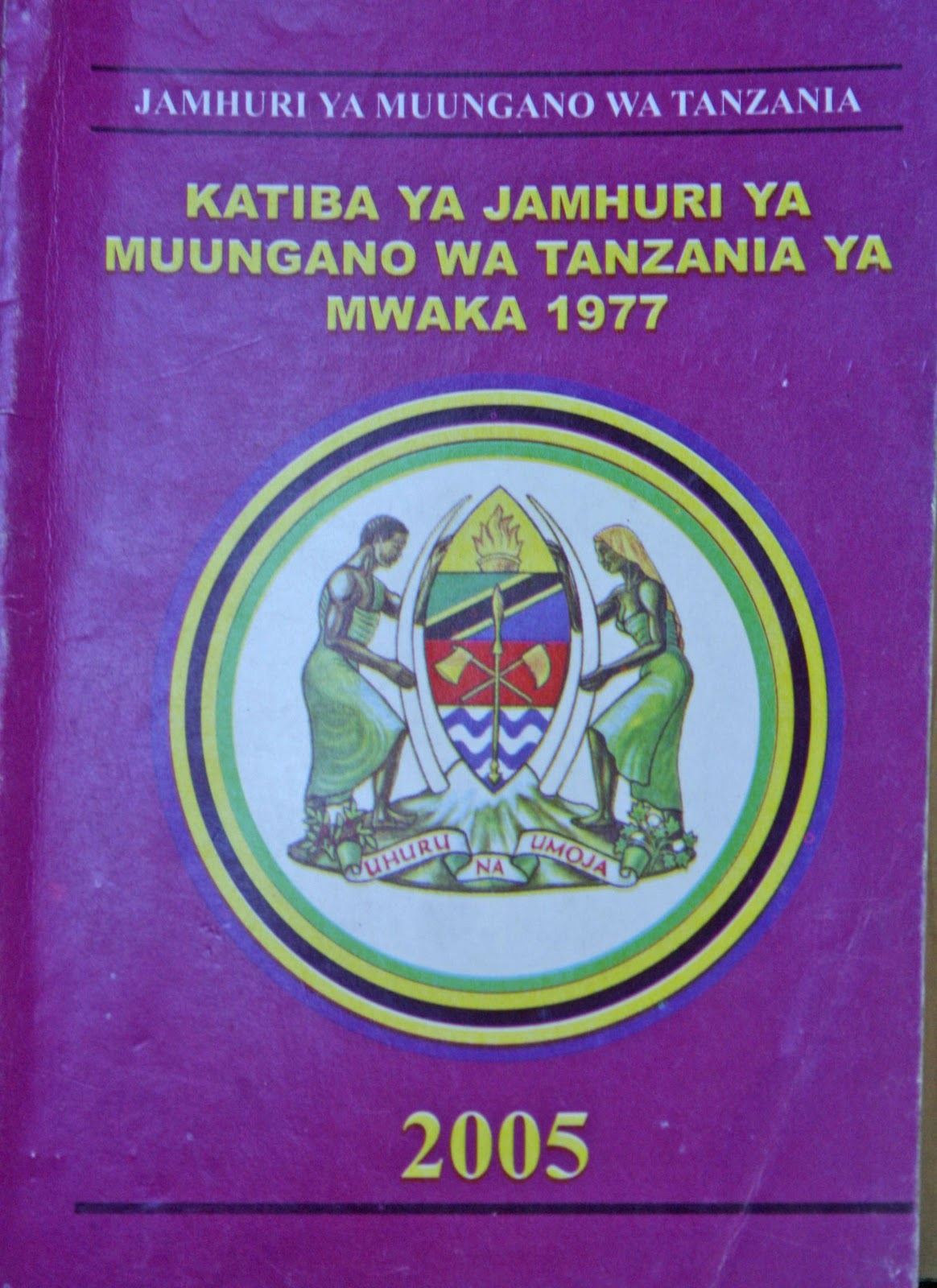
Tanzania's National Festivals and their Significance
Identify Tanzania's national festivals and their significance
National festivals are special public days created by the state which exempt people from doing any government or official work and therefore people are expected to rest. In Tanzania these days are called Public holidays.
Types of national days
Religious public days
These days are marked by special religious events or festivals according to the beliefs and faith of particular group of people. In Tanzania there are two dominant religious, namely Christianity and Islamic. The public holidays associated with these religious are;
- Christmas day - falls on 25th December each year
- Easter holiday – depends on Christian calendar
- Eid-el-Fitri and Eid –el-Haj – Depend on Islamic calendar and sighting of the moon
- Boxing day – Falls on 26th December each year
Political public holidays
These are special days that commemorate events which have profound meaning politically. Sometimes they are known as civic national festivals and holidays Political public holidays in Tanzania are;
- Independence day – falls on December 9th each year
- Union day – fall on 26th April each year
- NaneNane day – Falls on 8th August each year
- Zanzibar Revolution Day – falls on 12th January each year
- Nyerere Day – falls on 14th October each year
- Karume Day – falls on 7th April each year
- Sabasaba Day – falls on 7th July each year
Universal public days
These are special days for the rest and celebration for all people in the world. These universal holidays are;
- New Year – falls on 1st January each year
- Workers day/ labour day – falls on 1st May each year
Importance of national festivals/ public days
The followings are the Importance of national festivals/ public days;
- These days mark important events in our country
- The celebration keep the history alive since Tanzania are reminded of what has taken place in their country
- During these events leaders pass important information to the public
- Public celebration provides an opportunity for citizens to meet and share views, experience and knowledge.
- Celebrating together enhance the unity of Tanzanians.
- Annual celebrations impart on Tanzanians the culture of commemorating important national events.
- These events helps the leaders to identify problems in the society as citizens highlight their problems through speeches, posters, drama or songs.
Exercise 2
Answer the following questions
- With examples mention three types of national festivals in Tanzania
- When do farmers and traders exhibit their agriculture products, implements and machinery?
- What are the importance of national constitution?
- Mention any five compositions of the coat of arms and explain what each component represent.
- Name various occasions you know where the national anthem is always sung.
- The Tanzania national flag has four colors:
- Black represents ---------------------
- Yellow represents -------------------
- Blue represents ---------------------
- Green represents --------------------
- Why is it important to respect national symbols?
- Mention three uses of coat of Arms
- Why do you think it is important to have the union government of Tanzania and Zanzibar?
- When the first constitution of the United Republic of Tanzania was written?
Subscribe to:
Post Comments
(
Atom
)




No comments :
Post a Comment